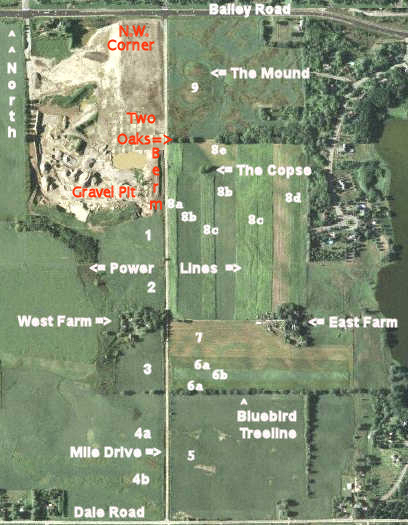
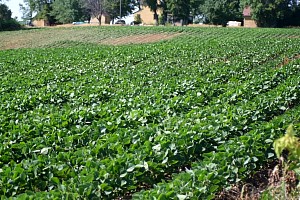 July proved to be very hot - continuing a trend. It was also dry. Here are the
soy beans growing with the west farm in the background.
July proved to be very hot - continuing a trend. It was also dry. Here are the
soy beans growing with the west farm in the background.
|
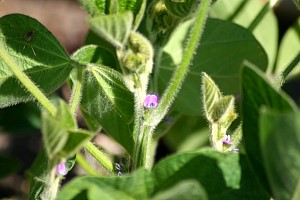 A close-up of the flower on a soybean plant.
Return to Flora
A close-up of the flower on a soybean plant.
Return to Flora
|
|
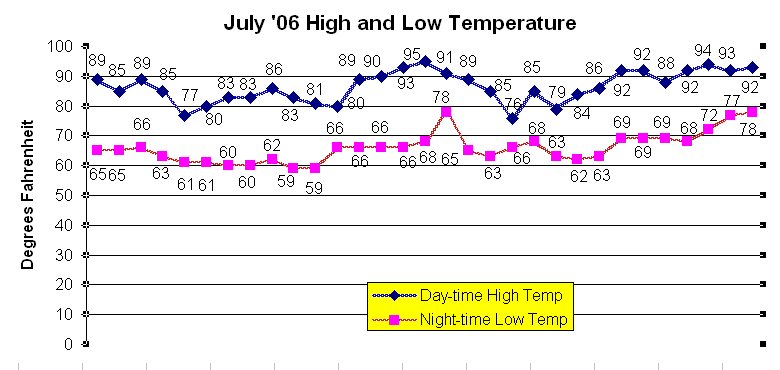
|
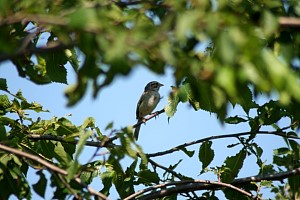
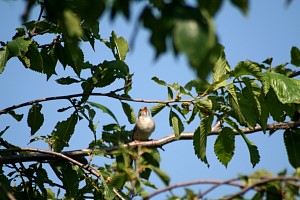
This little guy singing his heart out is a Chipping Sparrow (Spizella passerina).
It's identified by its unmarked white breast, a black eye line, and a white streak above eye.
I don't believe this is an American Tree Sparrow since it doesn't have a pronounced black
spot on the breast. Return to Birds
|
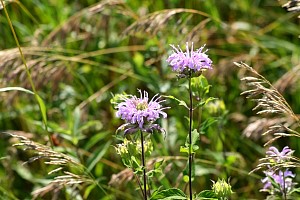
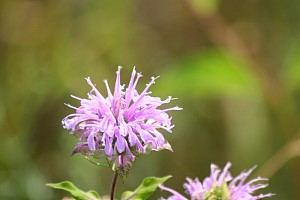
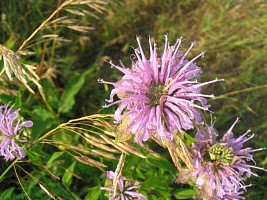 Wild bergamot (Monarda fistulosa) is a native perennial exhibiting slender creeping rhizomes
resulting in one finding large clumps of this pretty flowering plant.
The plants have aromatic leaves.
Wild bergamot is a member of the mint family which is
noted for its fragrant oils (lavender, rosemary, mint, horehound, thyme etc).
Return to Flora
Wild bergamot (Monarda fistulosa) is a native perennial exhibiting slender creeping rhizomes
resulting in one finding large clumps of this pretty flowering plant.
The plants have aromatic leaves.
Wild bergamot is a member of the mint family which is
noted for its fragrant oils (lavender, rosemary, mint, horehound, thyme etc).
Return to Flora
|
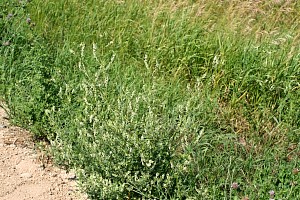
White Sweet Clover (Melilotus alba) blooms June through August on second year plants.
White Sweet clover invades and degrades native grasslands by overtopping and shading native sun-loving plants thereby reducing diversity. It grows abundantly on disturbed lands, roadsides and abandoned fields.
First year plants are hard to detect.
Native to Europe it was brought to the U.S. in the late 1600s and still used today as a forage crop and soil enhancer predominantly in the Great Plains and Upper Midwest.
Return to Flora
|
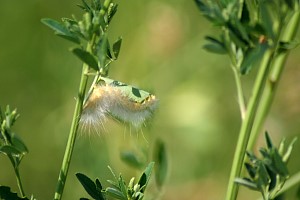
The caterpillar most likely from the moth genus Spilosoma, where the
larvae are typically very hairy.
|
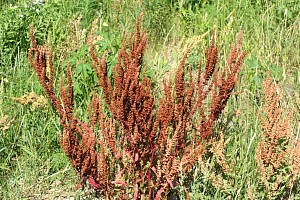
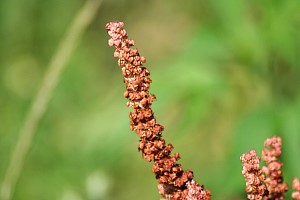
Curled Dock (Rumex crispus) is native to Europe and western Asia. It spreads through the seeds contaminating crop seeds, and sticking to clothing. In the rightmost picture you can see the seeds.
The curled dock gets its common name from its dark color (Old English "docce") when it goes to seed.
Return to Flora
|
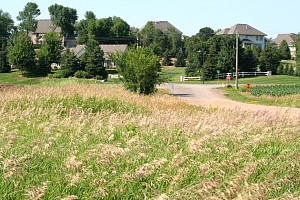
One of the last pictures of this corner of Mile Drive - soon the bulldozers will come and
obliterate this small stand of immature trees where I know several birds nested earlier in
the year. In the foreground are the drooping heads of
Downy brome (Bromus tectorum ). This annual grass that came from Europe in
about 1861. It's now the dominant plant on over 100 million acres in the western
United States, making it the most common plant on the continent. It seeds from
late spring into the summer.
|
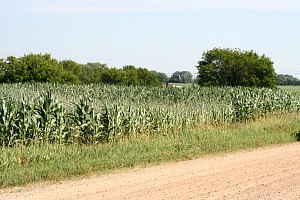
The last few weeks have been unseasonably hot and dry - the light coloring in the cornfield shows
the heat stress in the growing crop. Note the pocket that has not produced the same level
of leaving due to stress. These plants may not produce corn at all.
|
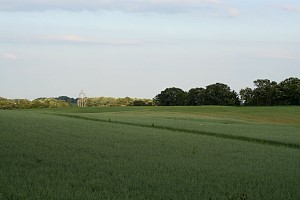
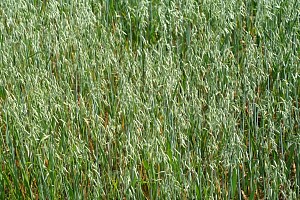
The view over the oat field in Field #7. Again, the difference in height of plants in the field
was due to a mistake/failure of the farmer's machinery at planting time. The rightmost shot shows
that oats have formed.
Return to Consumables
|
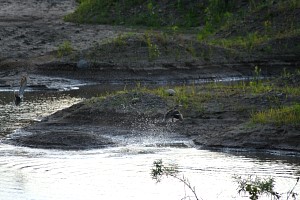
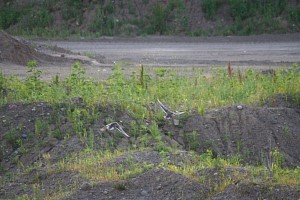
I walked down into the gravel pit to the pond formed at the bottom and took pictures of
the waterfowl that my presence spooked into flight. These two ducks are hen mallards.
Return to Birds
|
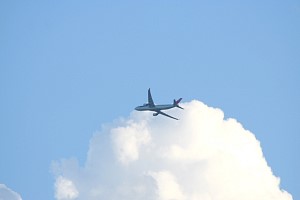
An airplane overhead is going around in the holding pattern of MSP International airport.
The road is located over both flight patterns and the
go-around path for the MSP international airport.
I think this is the the Boeing 767, the widebody sister of the
narrowbody Boeing 767.
767s produce less pollutant
emissions per pound of fuel than any comparably sized jetliner,
including the A330-200. The
767 family is cleaner than industry standards for all categories of emissions --
nitrogen oxides, hydrocarbons, smoke and carbon monoxide.
The air flowing through a 767-400ER engine at takeoff power
could inflate the Goodyear Blimp in seven seconds.
|
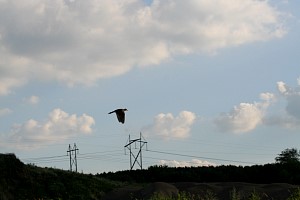
Silouette of a Mourning Dove - the beak is very long.
|
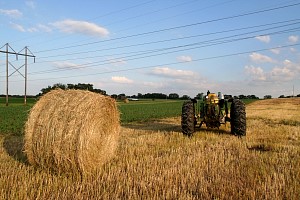
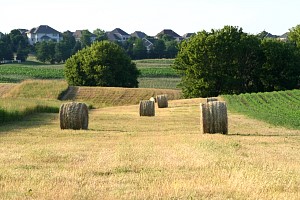
Gene and his son-in-law have left the tractor out after they bailed the hay in
Field #8. Here are my art-sy shots. My camera doesn't have enough resolution to capture solid
high voltage power lines, which surprises me. The farmer cuts the hayfield, then let's it sit
to dry out. He may sweep it into windrows (long lines) to dry using equipment for that purpose.
The last step is to come by with the bailer and make these huge rolls. In the old days
the farmers made square hay bales.
|